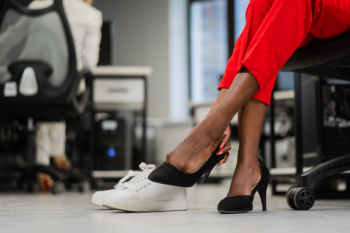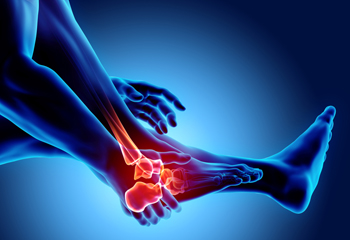
Pickleball, a popular sport blending elements of tennis, badminton, and table tennis, is a favorite for its accessibility and fast-paced gameplay. However, like any physical activity, it carries the risk of incurring foot and ankle injuries. One common injury is ankle sprains, occurring when the ligaments supporting the ankle stretch or tear due to sudden movements or changes in direction. These sprains can result from quick pivots, stops, or landing awkwardly after jumping. Additionally, players may experience overuse injuries such as tendonitis or stress fractures, particularly in the foot and ankle regions. The repetitive nature of pickleball movements can strain tendons and bones over time, leading to inflammation and pain. To mitigate the risk of foot and ankle injuries while playing pickleball, it is helpful for players to prioritize proper warm-up exercises, wear supportive footwear with adequate ankle support, and practice good technique to minimize strain on these vulnerable areas. If you have injured your foot or ankle while playing pickleball, it is suggested that you consult a podiatrist who can offer you effective treatment methods.
Ankle and foot injuries are common among athletes and in many sports. They can be caused by several problems and may be potentially serious. If you are feeling pain or think you were injured in a sporting event or when exercising, consult with one of our podiatrists from Canonsburg Podiatry Associates. Our doctors will assess your condition and provide you with quality foot and ankle treatment.
Common Injuries
The most common injuries that occur in sporting activities include:
- Achilles Tendonitis
- Achilles Tendon Rupture
- Ankle Sprains
- Broken Foot
- Plantar Fasciitis
- Stress Fractures
- Turf Toe
Symptoms
Symptoms vary depending upon the injury and in some cases, there may be no symptoms at all. However, in most cases, some form of symptom is experienced. Pain, aching, burning, bruising, tenderness, tightness or stiffness, sensation loss, difficulty moving, and swelling are the most common symptoms.
Treatment
Just as symptoms vary depending upon the injury, so do treatment options. A common treatment method is known as the RICE method. This method involves rest, applying ice, compression and elevating the afflicted foot or ankle. If the injury appears to be more serious, surgery might be required, such as arthroscopic or reconstructive surgery. Lastly, rehabilitation or therapy might be needed to gain full functionality in the afflicted area. Any discomfort experienced by an athlete must be evaluated by a licensed, reputable medical professional.
If you have any questions, please feel free to contact our office located in Canonsburg and McMurray, PA . We offer the newest diagnostic and treatment technologies for all your foot care needs.




